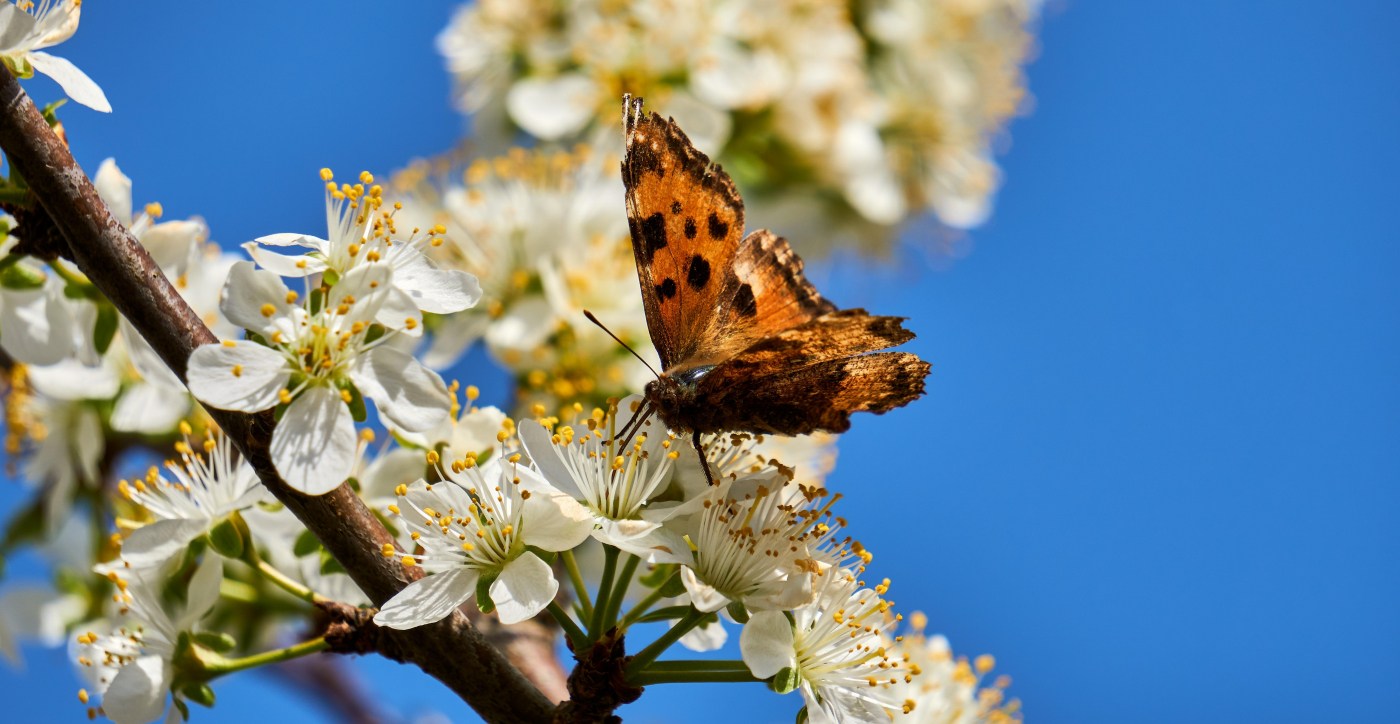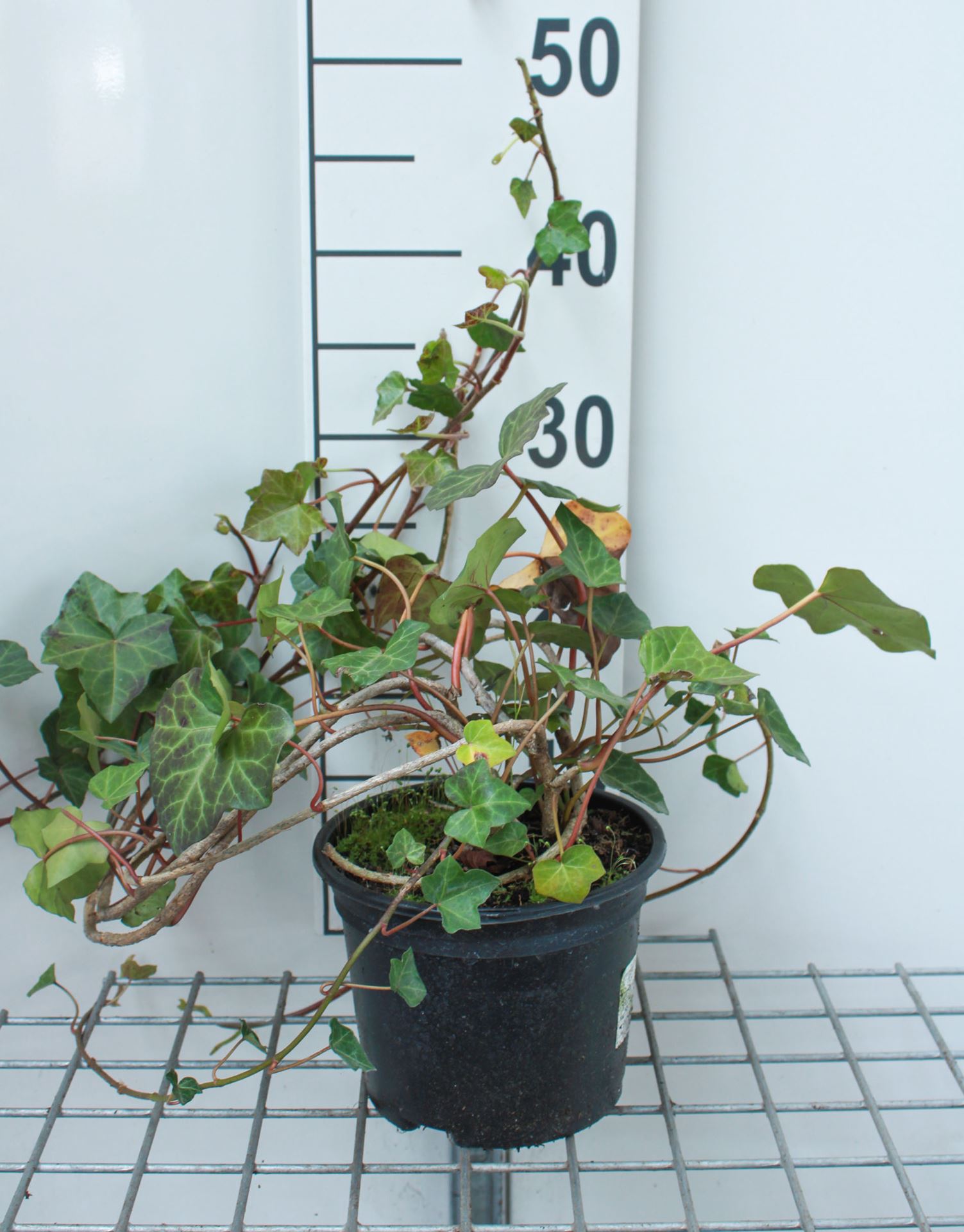
A garden full of bees and butterflies, part 3: The butterfly
Butterflies flutter about elegantly and cheerfully in the garden. In Flanders, there are about 48 species of butterflies flying around and more than 2,300 species of moths with all kinds of bright colours and patterns. So we want to spot as many as possible, attract them to our garden and keep them there.
🦋 Seductive flowers
Some tips to turn your garden into a butterfly paradise:
- Make sure that butterflies can find nectar in your garden from spring to late autumn. You will need to put some thought into the layout of your garden. In spring, willows, hazels and crocuses are a source of nectar. In autumn, the butterflies can get their supply of nectar from the sky spanner, ivy and the royal weed. Also plant a few bulbs in the autumn which will flower from February to April (e.g. the country crocus or foxglove).
- The butterfly bush or Buddleja davidii attracts many butterflies with its fragrant and beautifully coloured flowers. So be sure to give it a spot in the garden.
- There are also special mixtures for butterfly-friendly flower meadows for sale. We also offer different varieties in our webshop.
- Leave nettles behind. They may sting us but butterflies love them.
- Host plants are of crucial importance if you want to attract more butterflies to your garden. The butterflies only trust these plants with their eggs. The caterpillars find enough food there to develop into strong butterflies. Don't you have host plants in your garden? Then they will look elsewhere and the butterfly population in your area will decrease.
- Native plants do very well by butterflies and bees. They provide them with the necessary nutrients.
- Provide some plants and bushes that stand out above the others. The males use these as look-outs to spot a suitable female. This lookout also serves to defend the territory against possible intruders.
🦋 Top 5 butterfly-friendly plants
1. The butterfly bush or Buddleja davidii
2. Climbing ivy
3. Red sunflower
4. Lavender
5. Marjolein
🦋 Picky rascals
The caterpillars are fussy eaters. They often only drink one kind of nectar. The adults, on the other hand, are less demanding and feed on all nectar types of native plants. However, butterflies need more than just the sweet nectar. They need water, minerals and salt to survive. They get these from the juices of rotting fruit, the urine of other animals or the droplets left over after a shower. So always make sure there is a damp place in your garden.
🦋 King of winter
You can also help the butterflies in the winter. You may not have flowering plants and flowers anymore, but there are plenty of other ways to keep them in your garden. Make sure you don't overdo it in winter. Being lazy is allowed just this once. If you mess around too much in the garden, you can do a lot of damage to the eggs, caterpillars and pupae resting among the dried leaves or grass. Leave the butterflies some wild and messy corners where they can hide until the temperatures rise again. Not all butterflies stay here for the winter, as the peacock and lemon butterfly do. Some fly to better and sunnier places, such as the thistle butterfly.
🦋 Summer butterfly peak?
This summer there should be a peak in the number of butterflies in Flemish gardens. This is due to the cold month of March, and the sudden warm weather in April and May. Because of the low temperatures in February and March, the butterflies stayed in their pupa longer. With the bright sunshine of the past two months, the butterflies emerged from their pupae simultaneously. These butterflies have been able to fly around a lot and lay a lot of eggs, which means we will see more butterflies than usual this summer. There will also be more food for the caterpillars due to the combination of the high temperatures and the intermittent rainfall.
🦋 The big butterfly weekend
Every year, Natuurpunt organises the Great Butterfly Weekend to monitor the butterfly population. This year the counting weekend will take place on 28 and 29 July. Want to participate yourself? Take a walk of at least 15 minutes in your garden and count all butterfly species and how many you see of each. It's best to pick a sunny moment because that's when the butterflies are most active in your garden. Can't spot any butterflies? Then you'd better report this to Natuurpunt, because the butterfly population in your neighbourhood is not doing so well. On the website of Natuurpunt you can download a map where all species of butterflies can be found. It's fun to do with the children!

Did you know that:
butterflies can only fly at a body temperature of 20°C? Otherwise their wings do not work optimally.
More info? Receive all our gardening tips directly in your mailbox!
We'll only email you handy facts, green advice and our best promotions & discounts. You'll receive it about once a week and you can unsubscribe at any time. No spam, promise 🤞














